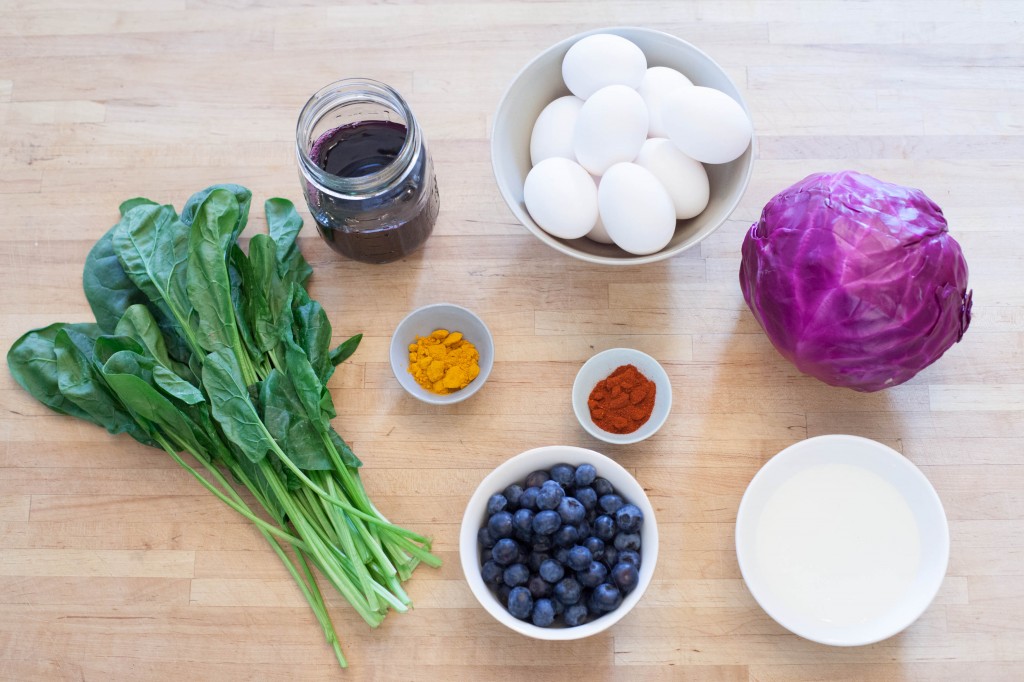Naturally Dyeing Easter Eggs Builds Memories and New Traditions
TEXARKANA, Ark. –
As a child, do you remember the smell of vinegar, the colored tablets, the bowls of colored dye and mom telling you to keep the color off your clothes and hands? Those were the days. Refrigerators everywhere contained a basket of colorful pastel, hardboiled eggs. Now you are more likely to find children hunting plastic Easter eggs filled with candy, money or tokens.
Take your children or grandchildren back to the good old days and build memories as you dye Easter eggs with natural dyes.
Dress appropriately! This can get messy.
Before you start, ask the children to put on an apron or play clothes in case of a splatter or spill.
Cover your work surface with a vinyl tablecloth and layers of newspaper to soak up any spills or drips which may occur. Ask the children to help you. Remember, you are building memories, and hopefully starting a family tradition.
Creating the dye
If using colorfast dyes, mix 7-8 drops of food coloring into 1 cup hot water.
Stir in one-fourth cup vinegar. For intense colors, use small amounts of professional-quality food coloring gels or pastes, available at most craft stores and kitchen supply stores. Let the children be creative in mixing colors; this is one time it is ok to double dip your food. This can be a learning experience as well as fun.
Use special techniques
Allow the children to make special effects on their eggs by coloring pictures or words
on the egg. Then, when dipped, the dye will not adhere where the crayon mark is. Also
create spattered eggs by dipping the eggs in a base color, allowing drying, and then
taking a clean toothbrush, lightly dipping in a contrasting color and carefully flicking
the bristles with your fingers to make a splatter on the eggs. Disposable gloves will
be handy for this project.
Children can also adorn their eggs with rhinestones, stickers, pictures, or just about
anything imaginable. Let them be creative and have fun!
Making your own homemade dyes is just as easy as purchasing a kit. All it takes is boiling some common ingredients in water with a tablespoon of vinegar until you get the color desired. Then strain the liquid into a bowl and discard the solids.
Some possible color choices include yellow, orange, lavender, pink, red, blue, violet blue, green and brown. Then of course, you can mix and match to make other colors.
Here are the colors and ingredients:
- Yellow: yellow onion skins, ground turmeric, orange or lemon peels, green tea, carrot tops
- Orange: follow same directions as yellow, with added beet juice, orange juice concentrate, cooked carrots
- Lavender: small quantity of purple grape juice, violet blossoms plus 2 teaspoons lemon juice
- Pink: cranberry juice concentrate, red grape juice, juice from pickled beets
- Blue: canned blueberries, red cabbage, grape juice concentrate; for violet blue, use violet blossoms, red wine, small quantity of red onion skins
- Green: spinach or kale
- Red: Beets, paprika, lots of red onion skins, raspberries
- Brown: Strong brewed coffee or tea
Remember food safety best practices
Once you have your eggs decorated just right, it’s time to consider food safety as it relates to hunting the eggs. Remember, if you plan to eat the Easter eggs you decorate later, be sure to use only food grade dye. For an Easter egg hunt, avoid cracking the egg shells. If the shells crack, bacteria can enter and contaminate the egg inside. Also, hide eggs in places that are protected from dirt, pets, and other bacteria sources, and keep hard -cooked eggs chilled in the refrigerator until just before the hunt. The total time for hiding and hunting eggs should be no more than two hours. Then be sure to refrigerate the "found" eggs right away until time to eat them. Eggs found hours later or the next day should be thrown out — not eaten.
How to make hard-boiled eggs for hunting or eating
- To make perfect hard-boiled eggs for hunting and eating, place 12 eggs in a pot with enough water to cover the eggs.
- Cover and turn stove to high; bring to a boil and turn off heat; place pot on a cool burner.
- Let the pot sit with the cover on for 15 minutes.
- Meanwhile, fill a large bowl halfway with cold water; transfer eggs from the pot to the cold water.
- Replace the water with cold water as needed until the eggs are completely cooled.
- Chill in refrigerator at least 2 hours before peeling if using in a recipe.
Tried and True Tip: The secret to beautiful eggs is to let the eggs dry between coats of dye. This makes the color more vibrant.
